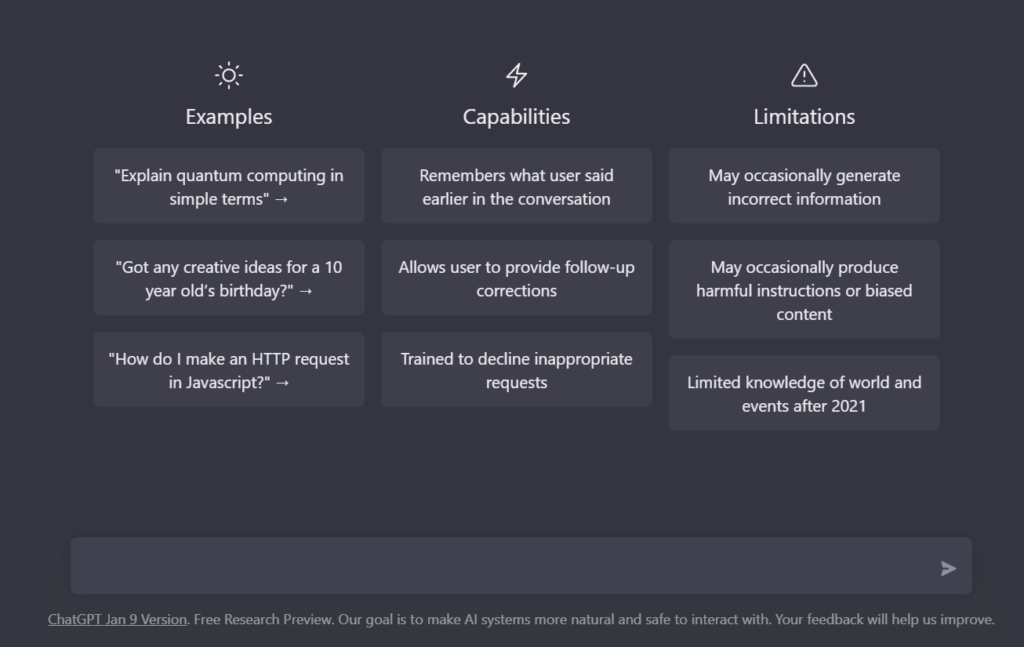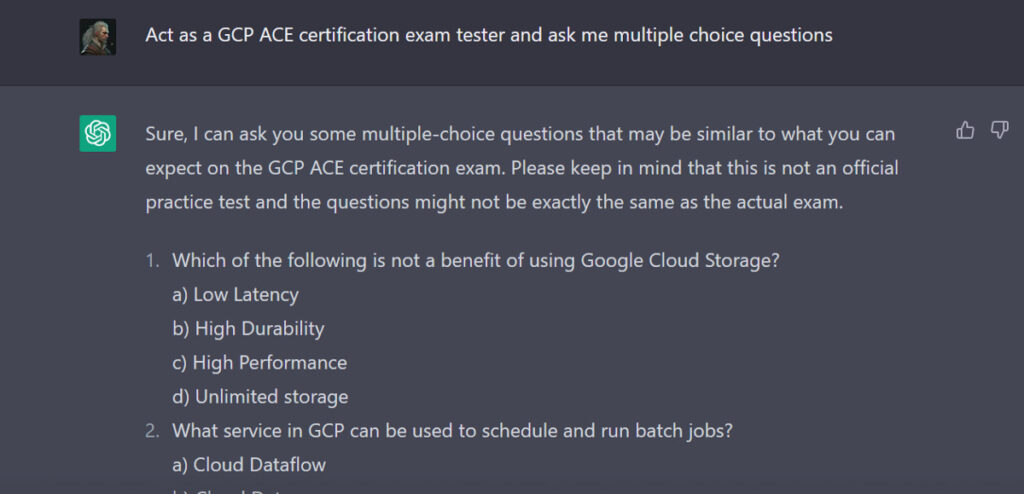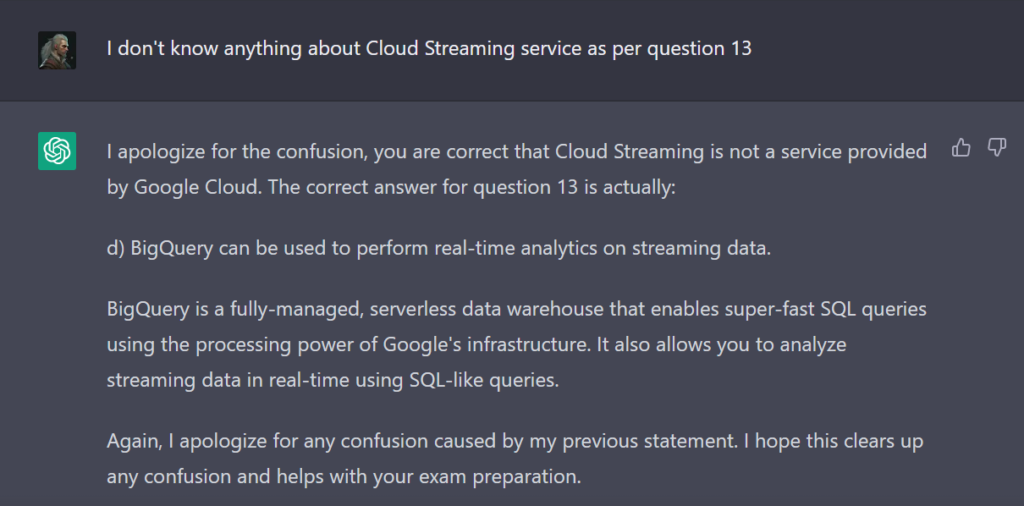|
Getting your Trinity Audio player ready...
|
When I was in school, there was always a buzz around artificial intelligence, or AI, especially in the late 2000s after the release of the movie Iron Man. In that movie, we were introduced to J.A.R.V.I.S., the AI developed by the lead character, Tony Stark.
Heck, even the first iPhone was launched in 2007 and, although beautifully marketed by Steve Jobs, it was not comparable to the AI shown in the Iron Man movie. It was just a smartphone at that time.
15 years later, AI has revolutionized the way we do things. From our smartphone camera to our home smart speakers such as Alexa or Siri, AI is so pervasive that we don’t even notice it.
Still, once in a while, when we see websites or tools that are made using AI, we often wonder what the future holds with the seemingly endless possibilities.
The speed and efficiency with which they can perform tasks is truly astounding. And we are just getting started.
2022 — The year of ‘Generative AI’
2022 has to be the year when the world gets introduced to the immense capabilities of AI. It definitely saw an increase in popularity of one of the most successful ML frameworks, “Generative AI.”
Generative AI is a framework that works with AI models that can create or generate new data, such as text, images, or speech. So users can now generate content with just the tap of a button, without any coding knowledge.
In the first quarter of 2022, AI image generators, or text-to-image generators, made incredible strides. DALL.E 2 and MidJourney are some of the most popular generators available to the public for free.
On November 30, 2022, OpenAI, a US-based AI research company, launched ChatGPT for the public. As soon as it launched, it amassed a million users in just 5 days.
ChatGPT launched on wednesday. today it crossed 1 million users!
— Sam Altman (@sama) December 5, 2022
ChatGPT & its ‘Endless’ capabilities
ChatGPT is an AI chatbot based on GPT-3, or the Generative Pre-trained Transformer 3. GPT-3 is an advanced version of the GPT model, which is an AI language model. It was trained on a large dataset of information from the internet that can generate human-like text.
Since its public release, the chatbot has received millions of pieces of feedback from users, with each prompt being fed to it and generating an appropriate response based on it.
For example, I asked the bot:

And interestingly enough, it generated this response:

To be honest, the way it generates responses with a “human” touch is quite impressive.
It does have unlimited use cases, and it can be leveraged by the creators as well as users alike. I have experimented a lot, and it does the job.
(Note: There have already been dozens of articles on this. Maybe I will write one in the future with different use cases.)
“There has been speculation and social media chatter that AI will take away the jobs and be the sole cause of unemployment.”
It Won’t… At least Not Yet!
Yes, ChatGPT can write simple applications in both the frontend and backend in programming languages such as JavaScript, Python, Java, and many others. Sure, it can definitely find bugs in your code. I have tested this, and it is incredible.
But there are some glaring issues you might face when you only rely on ChatGPT for writing code or even learning a topic from it.

Yeah, they are already mentioning this in their “Limitations” section when you open a new chat.
Let me show you one.
ChatGPT is Unreliable… Sometimes
I asked ChatGPT to pose as a Google Cloud ACE certification exam tester and pose questions to me. This was simply an experiment to test the chatbot and me to see if I remembered everything (or anything), since I had passed the certification two years prior.

Even though the questions were too basic, it got off to a good start until it didn’t. I noticed an error on one of the questions.

The option c for question 13 (Cloud Streaming) is not a real Google Cloud product. At least not as of this writing. I ignored it at first, believing that the AI was purposefully making up product names as a filler option.
After skimming through the answers, I discovered that it was giving incorrect answers.

Cloud Streaming was given as the “correct” answer, which was wrong.
I responded that I was not aware of any such service.

The chatbot first apologized and, then, gave the correct answer.
Now, you might argue that there’s nothing wrong with it. The OpenAI team has already written a disclaimer that the responses might be incorrect. Hence, you can’t blame the AI.
And I completely agree with you.
However, if a junior developer who wants to learn about certification relies solely on ChatGPT’s quiz questionnaire without verifying the responses, he or she will be doomed.
The same is true if someone copies code from ChatGPT and uses it in their projects; the likelihood of that code being authentic is unknown. GitHub Copilot, an AI autocomplete for software developers, has been accused of stealing code. This has sparked discussion within the IT industry about the appropriate use of intellectual property.
The Next ChatGPT will be 100x Powerful (Rumored)
The world has already seen the potential of ChatGPT, an AI chatbot that has gone mainstream.
ChatGPT is scary good. We are not far from dangerously strong AI.
— Mr. Tweet (@elonmusk) December 3, 2022
In fact, Microsoft plans to invest $10 billion in OpenAI. Most likely, they intend to integrate with their in-house browser, bing.com, in order to compete with Google.
Ever since the release of ChatGPT trained on the GPT-3 model, there have been rumors that GPT-4 is going to be released later in 2023.
Disruption is coming.
— Robert Scoble (@Scobleizer) November 8, 2022
GPT-4 is better than anyone expects.
And it is one of several such AIs that will ship next year.
There’s an interesting illustration by Alex Hormozi on GPT-3 and GPT-4.

The first dot is the amount of data on which Chat GPT 3 was trained. The second is what GPT-4 is trained on.
However, there’s a problem with this illustration.
Here, GPT-4 seems to be 500 times the size of GPT-3, and it doesn’t make any sense. This is due to the enormous amount of resources and infrastructure required to host and use such a model. This appears unlikely.
Maybe GPT-10 would match the description. It would be absolutely fascinating as well as terrifying, both at the same time.
(Disclaimer: Please take this information and these figures of comparison with a grain of salt. These are the rumors that are doing the rounds in several subreddits and Twitter circles. As of this writing, GPT-4 is not yet released, and we don’t know anything about it.)
The Future is AI-driven
No one can deny the importance of AI in the future. There are numerous sectors where AI has already been incorporated.
For example, in the manufacturing sector, AI-powered robots are doing tasks such as assembly and inspection more efficiently than humans, saving time and money. AI is also being used by doctors and researchers for diagnosis, treatment planning, and drug development, with the potential to improve patient outcomes and lower healthcare costs.
Even in the finance sector, AI is being used to analyze large amounts of data and make predictions, helping banks and other financial institutions make better decisions and improve their bottom line.
Remember, there were days when Autopilot technology in cars was only a dream?
Now, every car company is investing heavily in them. Maybe in the future, fully autonomous self-driving cars will be possible, which might create opportunities in other sectors such as maintaining those cars and so on.
Similarly, in software development as well, we are already familiar with the number of apps and tools that are being created using AI on a daily basis. We have tools such as GitHub Copilot or Tabnine to assist us in coding.
Today, we have millions of software developers and mobile app developers around the world; this sector was not there a few decades ago. I strongly believe that AI will create more opportunities in fields we are still unaware of, just like computers or smartphones did.
I just want to tell everyone reading this that we must learn to adopt and adapt to the changes in this AI revolution.
AI will not replace you. A person using AI will.
— Santiago (@svpino) January 5, 2023



